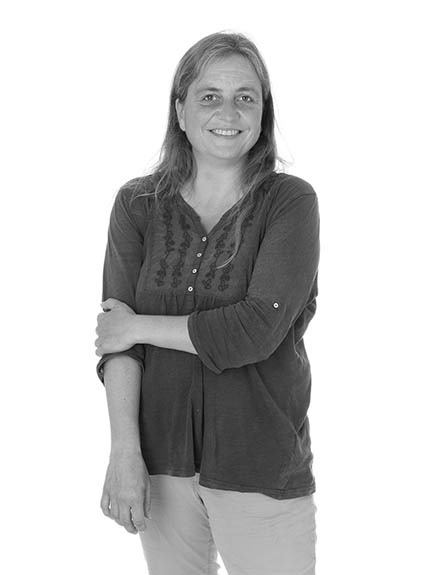| marie-hélène le ny |
|
photographist |

|
“I
wrote my Ph. D. Thesis in sub-marine volcanology. Today
I study the earth's deep structure in the marine environment.
We often work with oil companies for hydrocarbon research and
we also explore the earth's crust and upper mantle in order to
know why and where earthquakes might happen. As a first step
we measure the depth of the seafloor which gives some information
on the structures and the existence of faults visible at the
seafloor. We also use seismic methods which allow us to imagine
the structure of the earth up to a depth of 30-40 km using instruments
which are deployed on the sea-floor to record acoustic signals.
The oceanographic campaigns allow us to collect much data and
to meet colleagues from all over the world. The data are modelled
using computers and compared to additional data sets such as
gravity and magnetic data.
The
earth's surface is covered by plates. Continental plates formed
mainly by granite, these are the oldest rocks originating from
volcanism forming crusts up to 30 km in thickness. They mainly
represent our continents where humans live. Oceanic plates constitued
of basalt and gabbro are younger and originate from a different
kind of volcanism. They are formed on mid-ocean ridges and are
later subside into the earth's mantle at the border of continental
plates. It is at these subduction zones that most earthquakes
occur. |
||
|
Frauke Klingelhoefer Geophysical Researcher, Ifremer |
|||
|
|
|
|